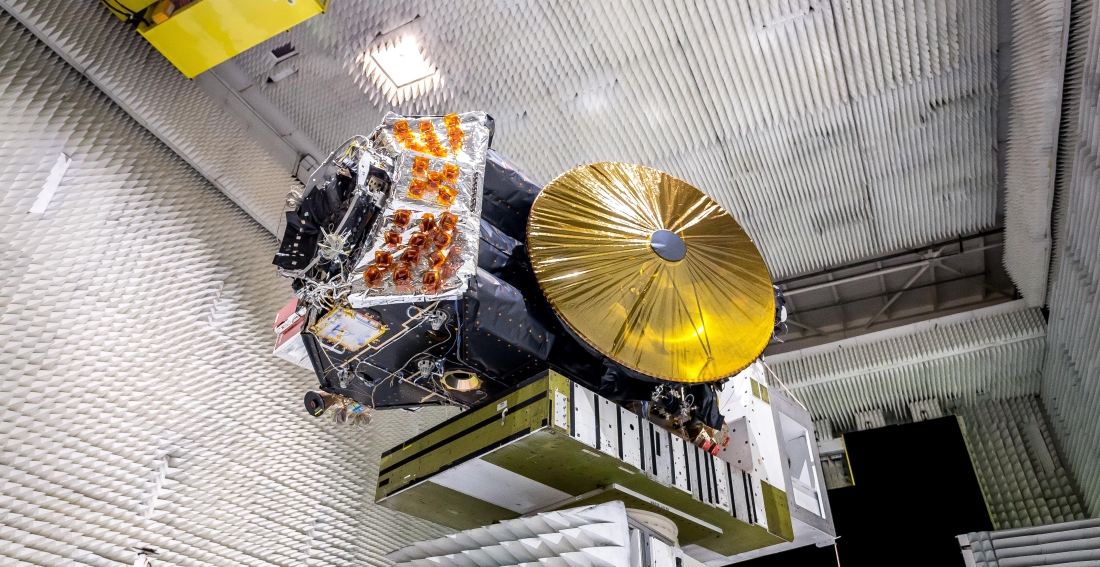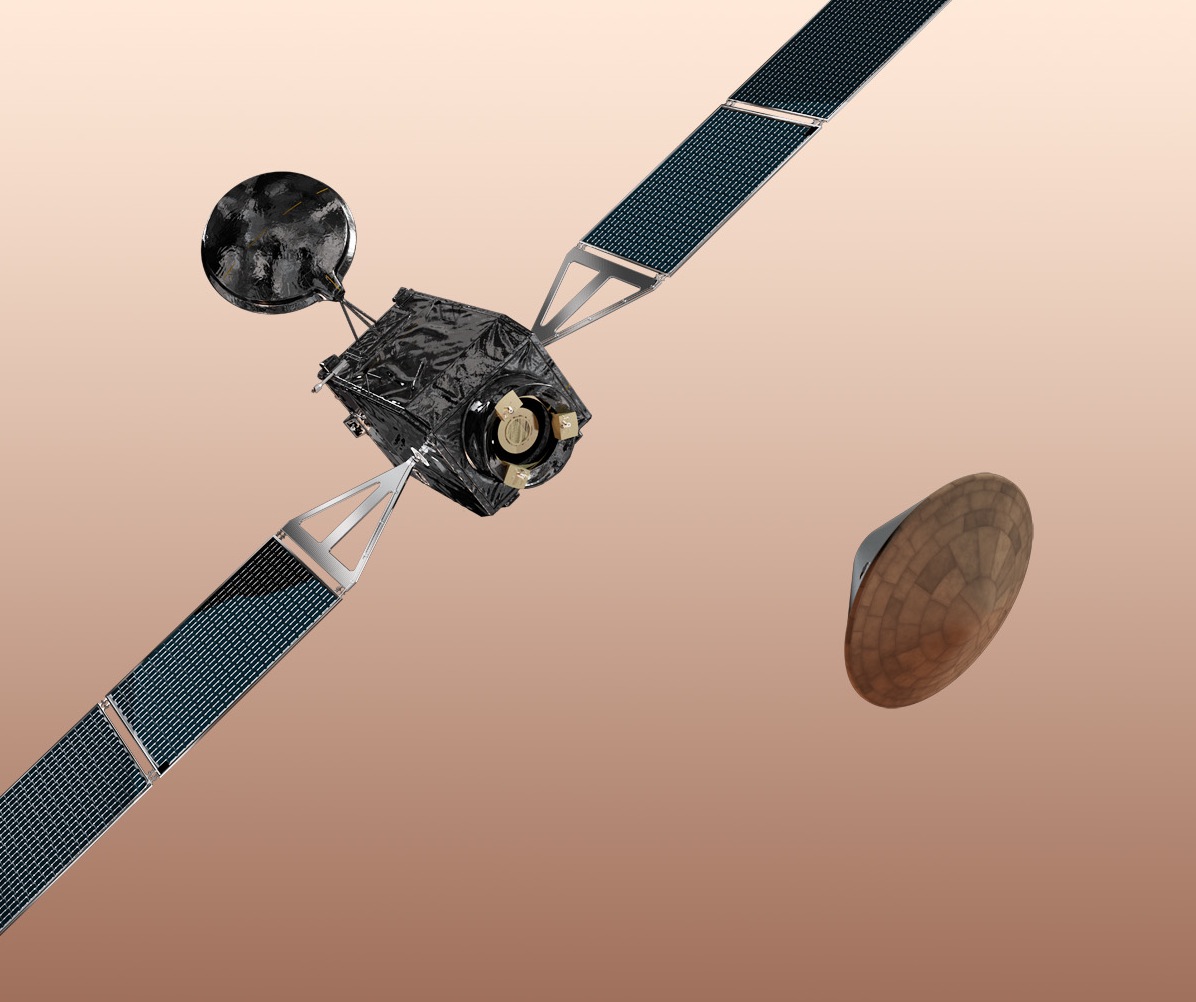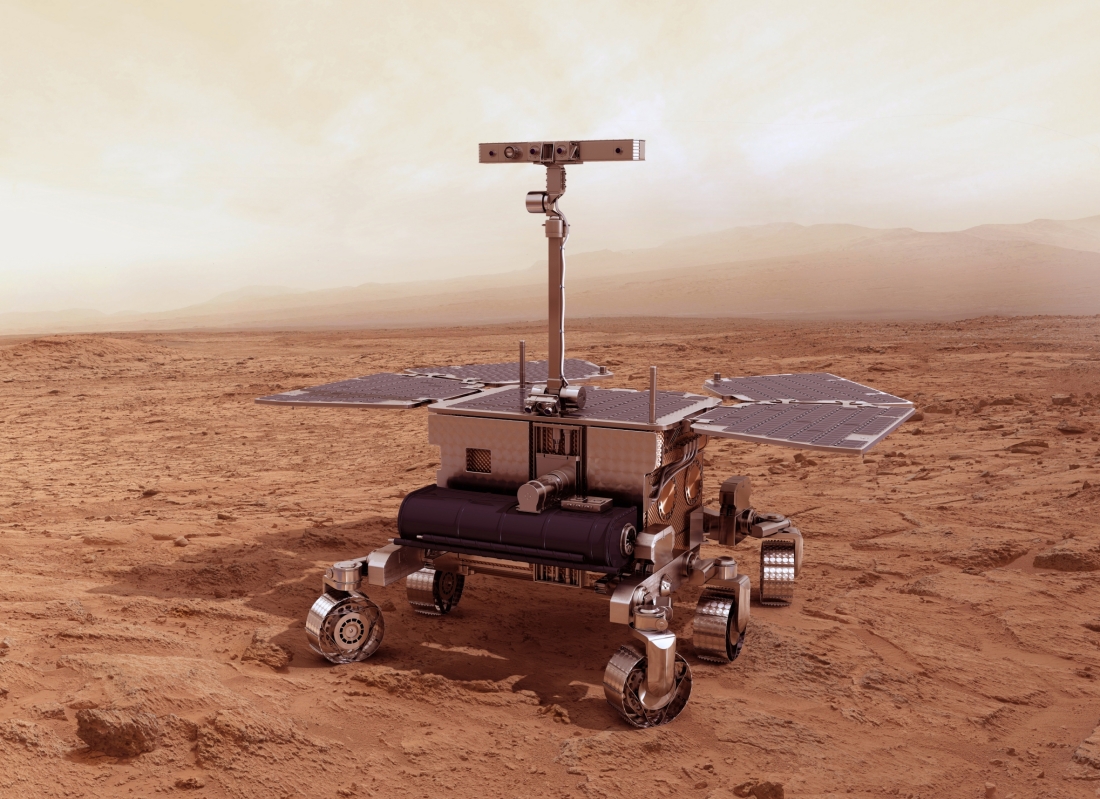Space Q&A – ExoMars: exploring the Red Planet
Walter Cugno: Hello.
Space Q&A: You're ExoMars director at Thales Alenia Space, and the program is enjoying wide media coverage these days. How would you explain it in a few words?
Walter C.: ExoMars is a two-pronged space exploration program, with missions in 2016 and 2020, co-led by ESA and the Russian space agency Roscosmos. Thales Alenia Space is overall prime contractor for the ExoMars program. The 2020 mission will land a rover on Mars. Fitted with a highly robust drilling instrument, the rover will gather samples from Martian soil, to be analyzed in the astromobile's mini-lab. The ultimate aim, of course, is to find out whether there were ever traces of life on Mars.
Space Q&A. Could you explain the different stages of the 2016 mission?
Walter C. It's front-page news these days because the different components in the 2016 mission – the Trace Gas Orbiter (TGO) and the Entry Descent and Landing Demonstrator Module (EDM) – are ready for shipment to the Baikonur launch site in the coming days. The spacecraft will be launched by a Proton rocket within a launch window extending from March 14 to 25, 2016. After launch, the TGO, filled with 2.3 metric tons of propellant and carrying the EDM, will start its journey to Mars. The EDM will be released by the Orbiter precisely on October 16, 2016, and will start its descent towards Mars three days later.

Space Q&A: So how exactly will we get the EDM to land on Mars?
Walter C.: The challenge is obviously to achieve perfect control over the module's descent. First, the EDM's initial interplanetary speed of 5.8 km/s will drop drastically once it enters the Martian atmosphere. When it's 10 kilometers above the surface, at a speed slightly less than Mach 2, a parachute will be deployed to further slow down the descent. Next, the heat shield will be jettisoned to give the radar altimeter a clear view of the Martian surface. At that point starts the carefully controlled descent of the landing platform, using guidance, navigation and control sensors, plus nine hydrazine thrusters (each rated at 400 Newtons). As it approaches the surface the thrusters will be turned off, allowing the module to land gently, with a gravity assist. The initial impact on the Red Planet will be cushioned by a collapsible honeycomb structure designed to protect the module and its sensitive instruments.

Space Q&A: How will this first mission help prepare for the mission in 2020?
Walter C.: The 2016 mission will allow us to gather large amounts of data during the atmospheric entry phase and particularly to validate the concept and technologies allowing a save entry descend and landing on Mars. The EDM carries a scientific payload to measure wind speed, humidity, atmospheric pressure, ground temperature, atmospheric transparency, electrical fields and many other parameters. Meanwhile, the TGO will circle the planet at an altitude of 400 kilometers, keeping a constant eye on the atmosphere and the planet's surface. It will study gas traces and sources in the atmosphere, contributing to the search for life on Mars. Operating until 2022, the orbiter will investigate the Martian surface, paving the way for the mission in 2020.
Space Q&A: What does the 2020 mission entail?
Walter. C: The second mission comprises a cruise module, a Russian descent module, and a landing platform with ESA's rover.
Space Q&A: what is the aim of the ExoMars second mission?
Walter. C: The second mission is scheduled for launch in 2020. For this mission, the spacecraft will penetrate the Martian atmosphere, release the descent module, which in turn will release the landing platform on Mars, with its precious cargo of the rover. This is obviously a very delicate operation, calling on all the lessons learned from the descent and landing module in the 2016 mission.

Space Q&A: What role does the rover play in all that?
Walter C.: The rover's task, eagerly awaited, is to explore the Martian surface for 218 sols (Martian days), equal to about 230 days back on Earth. Throughout this entire exploration phase, it can also drill 2 meters deep into the Martian soil, using its very robust perforator instrument. The samples collected by this instrument will be analyzed to find any traces/forms of past or current life. The last objective is a geochemical analysis of the Martian surface and the underground environment, providing data that will keep geologists and other scientists happy for years to come!
Walter C.: (laughing). Yes, in fact, I love that song!
Space Q&A: Could you have imagined when listening to this song that one day you would be one of the main participants in a mission like ExoMars ?
Walter C.: (laughing). I never saw things that way. But no, not even in my wildest dreams did I think that what was still sci-fi in the early seventies would become reality a few decades later!
More seriously, we all hope this mission will play a key role in scientific research. It's not the first time that humankind has sent a rover to Mars – remember NASA's Curiosity mission. But it will be the first time that we dig into Mars, hoping to find traces of life. Everybody who is contributing to these two ExoMars missions, companies large or small, space agencies, etc., is honored to be working on this program. You can't help but feel pride at the idea of taking part in this adventure, one that will delight both scientists and space exploration fans alike.
Thanks Walter, for taking the time to answer our questions. Stay tuned to Thales Alenia Space for the next issue of Space Q&A!
Copyrights:
Photos: © Thales Alenia Space/Imag[IN] (1-2) - © ESA (3-4)
Video: © Thales Alenia Space/Master Image Programmes